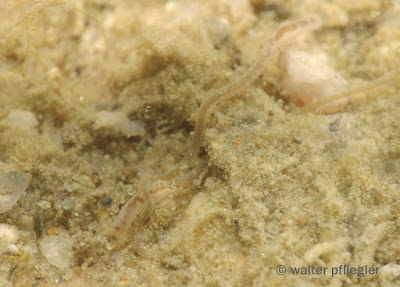May is usually one of the best months for photographing plants and animals. I show some plants and insects that were photographed in gardens, parks and in the forest called Nagyerdő in Debrecen (some insects where collected when I did not have my camera with me and photographed later). Location: Debrecen. Date: 09-19.04.2011.
A május általában az egyik legjobb hónap a növények és állatok fotózására. Mutatok néhány növényt és rovart, melyeket debreceni kertekben, parkokban és a Nagyerdőn fotóztam (néhány rovart, ha ne volt nálam gép, megfogtam és később fotóztam le). Hely: Debrecen. Dátum: 2011.05.09-19.
Néhány fotó Debrecen városából. Ez a mezei szarkaláb (Consolida regalis):
Detail of the flower:
Részlet a virágról:
An unripe fruit:
Egy éretlen termés:
A Tachinid fly, Cylindromyia sp, cleaning itself. The life habit of Tachinid flies are similar to that of the Braconid wasps.
Egy fürkészlégy, Cylindromyia sp, tisztogatja magát. A fürkészlegyek életmódja nagyban hasonlít a gyilkosfürkészekére.
There are not many mayfly species in lowland habitats, but they can be quite numerous. This one has a wide distribution and it is quite common even in cityes. It's called Cloeon dipterum, this is the female. It has only one pair of wings and it is ovoviviparous.
Nincs túl sok alföldi kérészfaj, de azok elég nagy egyedszámban is előfordulhatnak. Ennek a fajnak nagy elterjedési területe van és még városokban is elég gyakori. A neve elevenszülő kérész (Cloeon dipterum), ez a nőstény. Csak egy pár szárnya van és ovovivipar.


The Oriental Cockroach, Blatta orientalis (female):
A konyhai csótány, Blatta orientalis (nőstény):
A tortrix moth, Pandemis sp:
Egy sodrómoly, Pandemis sp:
A march fly female, Dilophus sp:
Egy bársonyszúnyog (vagy bársonylégy) nőstény, Dilophus sp:
Pseudicius encarpatus, a nice jumping spider. It was found on house wall.
Pseudicius encarpatus, egy szép ugrópók. Házfalon találtam.
A silvery Philodromus male:
Egy ezüstös Philodromus-hím:
Egy ezüstös Philodromus-hím:
This wasp belongs to a rarely-found family: Proctotrupidae. Its a female Proctotrupes gravidator. It is a parasitoid.
Ez a darázs a ritkán található valódi törpefürkészek közé tartozik (Proctotrupidae), egy nőstény Proctotrupes gravidator. Parazitoid.
Ez a darázs a ritkán található valódi törpefürkészek közé tartozik (Proctotrupidae), egy nőstény Proctotrupes gravidator. Parazitoid.
The snail (Galba truncatula), which is an intermediate host of the river fluke.
A törpe iszapcsiga (Galba truncatula), mely a májmétely köztigazdája.
An aquatic oligochaete worm of the family Naididae:
Egy vízi kevéssertéjű gyűrűsféreg, egy naisz (Naididae):
Two aquatic plants that are common in ponds in the Great Hungarian Plain. This is the rigid hornwort (Ceratophyllum demersum):
Két, az Alföld tavaiban gyakori vízinövény. Ez az érdes tócsagaz (Ceratophyllum demersum):
This is very probably the Eurasian Watermilfoil (Myriophyllum spicatum) (there are some similar Myriophyllum species, however):
Ez nagyon valószínű, hogy a füzéres süllőhínár (Myriophyllum spicatum) (van pár hasonló Myriophyllum faj):
And a picture of a leaf with transmitted light:
És egy kép egy falevélről áteső fénnyel:



















No comments:
Post a Comment